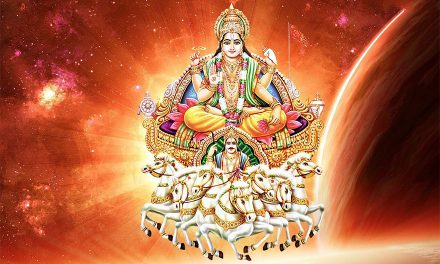In the Vedic culture, devotees often worship multiple Deity forms of the Lord. In addition to the principal Deities who may be installed in a large temple in the region, there has always been more localized worship because it is often impractical for many to travel great distances on a regular basis to the larger temples. Consequently, the first of the Tri-devatas is the Gramadevata, or presiding Deity of one’s town or village.
Worship of the Gramadevata is generally performed in the village temple where the devotee resides. Regularly visiting the temple with offerings of prayers, flowers, fruits, etc., and participating in yearly festival events, the devotee shares worship of the Gramadevata with family and neighbors in the village.
Next is the Kuladevata, or family Deity. The word ‘kul’ means family or clan and ‘devata’ means deity. The Kuladevata temple is visited regularly by family members to get the Deity’s blessings on weddings, births, etc. Many small temples are found throughout India where Laxmi deve or Parvati are the Kuladevata.
The third category is Ishtadevata, or the Deity personally worshipped by the devotee. The Sanskrit term “Ishta-devata” means ‘the God to Whom one prays the most’. Worship of the Ishtadevata is generally performed daily at home, where the small brass or wooden Deities are kept in a small temple room or shrine area dedicated to their worship. The Ishtadevata may also be kept with one’s personal belongings, or even carried constantly by the devotee, as in the case of Salagram silas.
Of these three types of devatas, the first two are fixed for the devotee at birth. The third is personally selected based on the heart’s inclinations.
In southern India, from Goa through Karnataka, Kerala and Tamil Nadu, the Saraswats were originally known to be Shavites. They worshipped Siva and Shakti from the days of their settlement in Saraswat desh on the banks of the River Saraswat. In their Smarta brahmana tradition, each family or Gotra worshipped a particular Deity. As people migrated, many Kuladevatas eventually became Gramadevatas as well.
Under the transcendental potency of Sri Madhvacarya, the Dvaita philosophy spread throughout this area, and most of the Saraswat Brahmins in South India became converts to Vaishavism. As they took up worship of Lord Krsna or Visnu, many of their Kuladevatas from the Siva and Shakti cult were given up, slowly forgotten or neglected. This transition in philosophy and sadhana can be found today, particularly in Goa, by visiting the many Kuladevata temples. Among the oldest Saraswat Temples there are the Maha Laxmi temple at Bandewade, the Sri Nagesh Maharudra Temple at Bandora, the Mangeshi temple of Priol, the Shanta Durga Temple at Kavale, and the Ganapati temple at Khandole.











